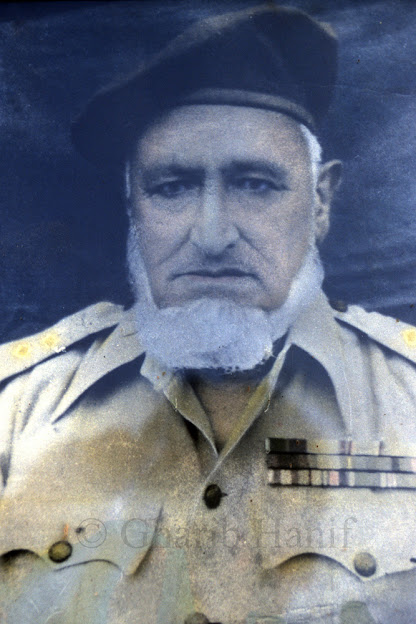Hast-o-Bood Part-25
Chapter IV
Historical background and brief overview of the state of Jammu and Kashmir
Maharani Jandan Kaur
This army completely conquered the state of Kashmir on the eleventh day of Ramadan in the year 1234 AH and made it a sub-state of the Sikh court. Nine Subedars ruled Kashmir one after the other in different periods on behalf of the Sikh Government Lahore. Among them are Egypt's Diwan Chand, Diwan Devi Das, Diwan Moti Ram, Prince Sher Singh [1] from 1832 to 1834 AD, Diwan Hari Singh Nalwa, Diwan Karparam Shrayon, and [2] Maharaja Ranjit Singh's Khubro. Ardali Bhamma Singh is worth mentioning. The latter was appointed Subedar of Kashmir in the year 1831 AD. Maharaja Ranjit Singh valued beautiful and tall people. Probably a factor as to why they're doing so poorly. The Sikh rule of Kashmir from Darbar-e-Lahore spans from 1819 to 1846 AD. Maharaja Ranjit Singh died in 1839. After his death, from the womb of his queen Raj Kaur, his son Kharak Singh ascended the throne as Maharaja in the years 1839 to 1840. Maharaja Kharak Singh died on November 5, 1840 AD. After his death, his luxurious, carefree and disobedient son, Crown Prince Kanwar Nonhal Singh, inherited the throne. But he was an incompetent son of his father, a Sufi saint. After the death of Maharaja Kharak Singh, strange incidents took place with his Crown Prince Nonhal Singh. When he learned of his father's death, he wept and climbed to the second floor of the mansion, where he was slapped by an unknown person. Frightened, he went downstairs, but despite much searching, the slapper could not be identified. He later left Lahore Fort with his father Arthi in the presence of Jim Ghafir. Just below the mint door, an unknown person hit him hard on the back with a full wooden stick, making the prince look very annoyed. An attempt was made to apprehend the man but he did not appear anywhere in the assembly. Before the widow of Maharaja Kharak Singh was cremated at the cremation ground, Prince Noonhal Singh was asked to be greeted and the Maharaja was asked to take off his crown and wear it. But the queen only said "Karni bharni hai", and threw the crown on the ground instead of placing it on the crown prince's head. Kanwar Noonhal Singh's health had deteriorated so much that his father's body had not yet been completely burnt. He returned from the cremation ground and fell unconscious as soon as he reached Maharaja Ranjit Singh's Samadhi. He was brought to his senses and taken to the river Ravi for ashnan according to religious custom. Just as Dera Guru was approaching Arjuna, a huge and vigorous tree fell from its roots with a terrible explosion. With this sudden horrible sound, Kanwar Nonhal Singh made an insignificant mistake. With great perseverance and patience he ascended to the river Ravi and returned to the palace holding hands with Odham Singh, son of Raja Gulab Singh Dogra. When the two inks reached the bottom of the doorway, part of the roof fell on them and their companions. Udham Singh was killed on the spot but Kanwar Nonhal Singh was brought to the fort injured. Where he died. And so a disobedient son came to his punishment.
After the death of Kanwar Nonhal Singh, Maharani Jundan took over the running of the government by making Maharaja Ranjit Singh's prince, Dilip Singh, the ruler of the Sikh court in Lahore. But various leading Sikh chiefs brought someone to mind. Also, the Sikh kingdom was disintegrating due to their rivalry, lust for power and fiber. The British rulers,[3] on the other hand, who were surveying the situation from across the Sutlej with their eager eyes, were looking for a suitable opportunity. That as soon as possible the Sikhs should expand and include the occupied Punjab and the adjoining fertile area in their kingdom. Even Maharani Jindan did not like the rebellion of the Sikh chiefs. In order to destroy the fort of these elements, he first put them in the mirror with smooth words and then suggested to them that the British were trying to occupy their country aggressively and this was the need of the hour for the brave Sikh nation. That is, they should cross the Sutlej and snatch the adjoining areas of Punjab from the Ingars and join the Sikh government. Thus, [4] the Sikh chiefs, misjudging the English community, provided proof of their recklessness and invaded the British-occupied territory in December 1845 AD. At that time Lord Hardinge was the Governor General of the British Occupied Territories. Eventually the British army defeated the Sikhs at Sabra and the Sikh warriors retreated towards Lahore with their feet on their heads. In pursuit of them, the British forces also entered the Punjab. Finally, on February 10, 1846, a treaty was written in which Lord Henry Lawrence was appointed British Resident in Lahore and Lord John Lawrence, the Governor General's brother, was made Commissioner of Jalandhar Doab. The Sikhs annexed the area to English rule under the same treaty.
to be continued ....
[1] Complete History of Kashmir, Part III, by Muhammaduddin Fook, page number 21
[2] Complete History of Kashmir, Part III, by Muhammaduddin Fook, page number 29
[3] Complete History of Kashmir, Part III, by Muhammaduddin Fook, page number fifty one to fifty three.
[4] Adventures of an officer in the service of Ranjit Singh. H. M. Lawrence
Note: It is not necessary that the blogger is agreed with the text of the Book.



Comments
Post a Comment